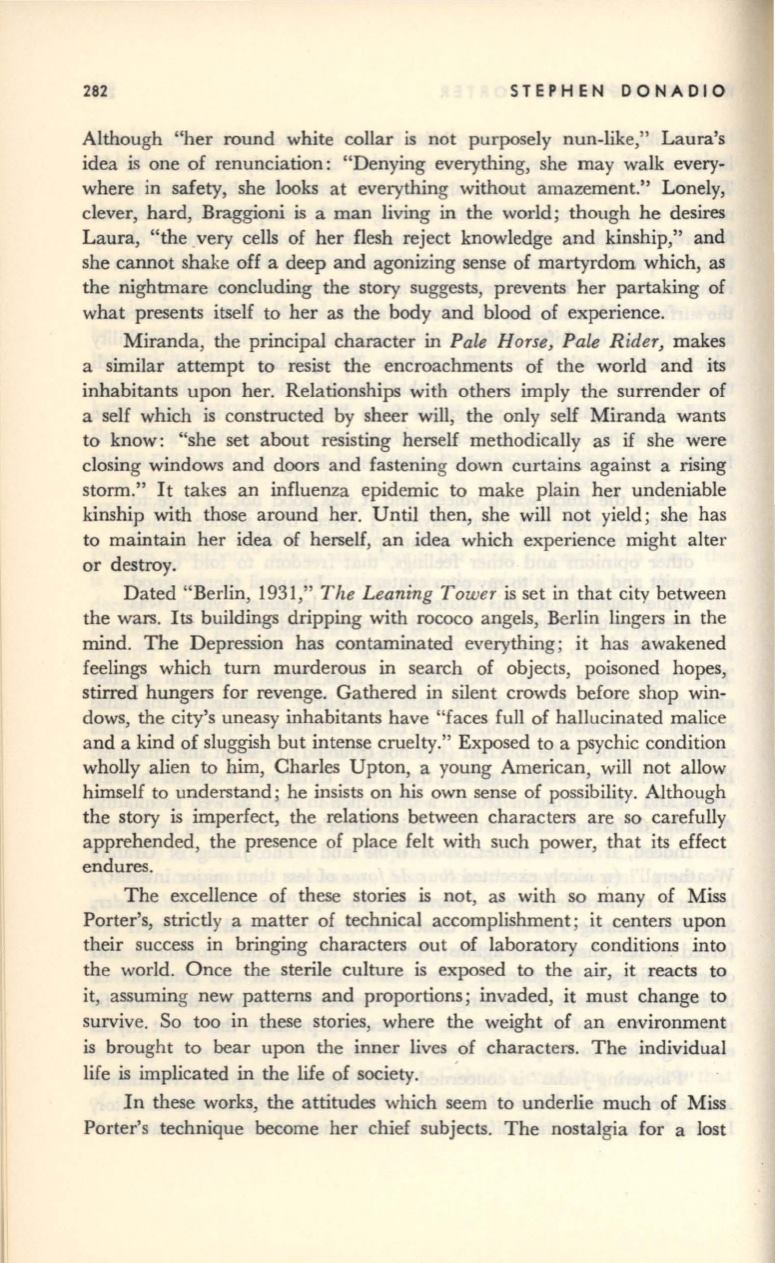
282
STEPHEN DONADIO
Although "her round white collar is not purposely nun-like," Laura's
idea is one of renunciation: "Denying everything, she may walk every–
where in safety, she looks at everything without amazement." Lonely,
clever, hard, Braggioni is a man living in the world; though he desires
Laura, "the very cells of her flesh reject knowledge and kinship," and
she cannot shake off a deep and agonizing sense of martyrdom which, as
the nightmare concluding the story suggests, prevents her partaking of
what presents itself to her as the body and blood of experience.
Miranda, the principal character in
Pale Horse, Pale Rider,
makes
a similar attempt to resist the encroachments of the world and its
inhabitants upon her. Relationships with others imply the surrender of
a self which is constructed by sheer will, the only self Miranda wants
to know: "she set about resisting herself methodically as if she were
closing windows and doors and fastening down curtains against a rising
storm." I t takes an influenza epidemic to make plain her undeniable
kinship with those around her. Until then, she will not yield; she has
to maintain her idea of herself, an idea which experience might alter
or destroy.
Dated "Berlin, 1931,"
The Leaning Tower
is set in that city between
the wars. Its buildings dripping with rococo angels, Berlin lingers in the
mind. The Depression has contaminated everything; it has awakened
feelings which turn murderous in search of objects, poisoned hopes,
stirred hungers for revenge. Gathered in silent crowds before shop win–
dows, the city's uneasy inhabitants have "faces full of hallucinated malice
and a kind of sluggish but intense cruelty." Exposed to a psychic condition
wholly alien to him, Charles Upton, a young American, will not allow
himself to understand; he insists on his own sense of possibility. Although
the story is imperfect, the relations between characters are so carefully
apprehended, the presence of place felt with such power, that its effect
endures.
The excellence of these stories is not, as with so many of Miss
Porter's, strictly a matter of technical accomplishment; it centers upon
their success in bringing characters out of laboratory conditions into
the world. Once the sterile culture is exposed to the air, it reacts to
it, assuming new patterns and proportions; invaded, it must change to
survive. So too in these stories, where the weight of an environment
is brought to bear upon the inner lives of characters. The individual
life is implicated in the life of society.
In these works, the attitudes which seem to underlie much of Miss
Porter's technique become her chief subjects. The nostalgia for a lost


